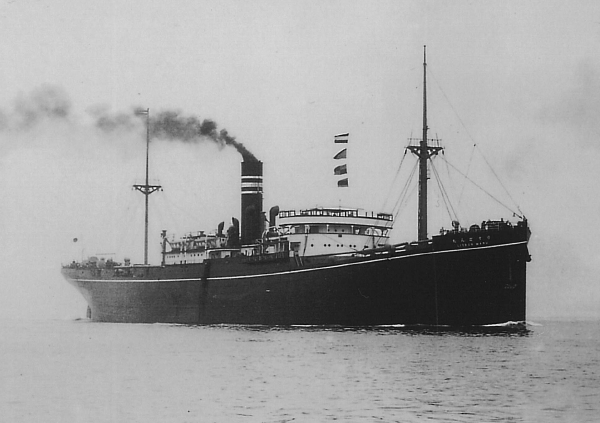| Lisbon Maru |
Lisbon Maru

| Operator | Nippon Yusen (NYK) |
| Classification | Passenger-Cargo ship |
| Gross tonnage | 7,053 tons |
| Speed | 12 knots |
| Departure point | Hong Kong |
| Departure date | 27 September 1942 |
| Destination | Moji, Japan |
| No. of POWs | Brit 1,816 |
| Location of disaster | East of Chushan Archipelago, south of Shanghai |
| Date of disaster | 27 September 1942 |
| POW casualties | 842 |
| POW survivors | 974 |
| Painting | Courtesy of NYK Maritime Museum |
On her way to transport the British troops surrendered in Hong Kong to Moji, Japan, at 07:10 on the morning of 1 October 1942, Lisbon Maru was torpedoed by the USS Grouper. One torpedo hit her starboard coal bunker and exploded, but there were no POW causalities. POWs who were on the deck were immediately sent down below and the hatches were covered with tarpaulins, and additional guards were placed near the hatches. Thereafter, although Grouper repeated torpedo attacks, in those days, with the defective US torpedoes, no further damage was incurred. However, after the attacks, there arose emotional entanglement between the Japanese and the POWs. Water supply and food had run out. Air in the holds where the POWs were had become foul. In spite of repeated requests to be allowed on the deck for fresh air, they were denied.
Late on this day, destroyer Kuri and Toyokuni Maru arrived for help. As the engines of Lisbon Maru had stopped, it was decided that the 778 Japanese soldiers who were repatriating home be transshipped to Toyokuni Maru, and tow Lisbon Maru to shallow water with the POWs in the holds. Regarding the POWs, the opinion of the guard leader, who said he was responsible for the POWs, did not agree with that of the Captain who had regard for their lives. The leader maintained that the Captain should not interfere with the POW matters. The conditions in the holds increasingly worsened. The holds began taking on water, but the POWs were physically too weak to pump the water out.
At dawn on 2 October, Lisbon Maru suddenly took a violent list, and she was in an imminent danger of going down. The Captain requested permission to abandon ship, but permission was denied by the leader. By this time, the POWs began thinking that it was high time for them to take matters in their own hands. A POW climbed the ladder, and ripped the tarp cover open with a butcher knife he had concealed. An officer climbed up to the deck and walked to the bridge to negotiate with the Japanese about their getting out of the holds. But as the guards began shooting, he was seriously wounded. At this point, the POWs realized that the ship had already met her doom.
The stern of Lisbon Maru sank, and hit a sand bar. The POWs got into a panic, swarmed to the deck, and jumped into the water. The guards fired at them from above. The men aft were in danger, as the water was beginning to pour into the hold. They follow the orders of an officer, and got out of the hold without a panic. As the ship went down, the water began rushing into the hull through the open hole. Japanese patrol boats, many Chinese junks and sampans came to the scene for help.
About 200 POWs managed to swim to the nearby islands. For the next few days until the Japanese destroyers came to gather them, they were looked after by the Chinese. Three POWs were hidden by the inhabitants who prepared their escape to Chongqung.
By 5 October, the surviving POWs were assembled at the Shanghai pier, and continued their journey to Japan. Of the original 1,816 POWs, 842 had died by drowning or being shot. After leaving 35 seriously ill or wounded in Shanghai and three missing, the remainder of 936 was transported to Japan aboard Shinsei Maru. During this voyage, five POWs died.
On 8 October, the evening edition of the Asahi reported, "US submarine sank Lisbon Maru transporting 1,800 British POWs in the East China Sea." This incident was broadcast overseas for making propaganda.